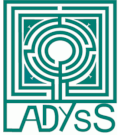Home > Programmes > Taeniases/Cysticercoses in Asia > China
China
2016, January, 17
The department of parasitology of the Asahikawa medical college (Pr Ito and colleagues) and the Primate Research Institute of the Kyoto University (Dr Okamoto) have carried out a research programme (2009-2012) aiming at improving detection tools and understanding the eco-epidemiology of teniases and cysticercosis in western Sichuan, in collaboration with the Sichuan Center for Disease Control (Dr. Li Tiao Ying and colleagues). This programme is supported by the Japanese Society for the Promotion of Science...
Invited by their Japanese colleagues, Patrick Giraudoux and Francis Raoul have joined the consortium. They are in charge of coordinating the eco-epidemiology study.
- The Japanese research departments focus on the development of immunological and molecular genetic tools for parasite detection.
- The Sichuan CDC is in charge of organising the screening of populations and patients follow up.
- The French partners set up a spatial database permitting the analyses of parasite distribution in relationship with the ecological and social context.
- Pr. Phil Craig (parasite immunology), from Salford University, UK, is also a partner of this programme.
However about other parasites, in its spirit, the present programme is in continuity with a collaboration that was supported, from 2001 to 2008, by the Fogarty International Center of the US National Institutes of Health on Echinococcus multilocularis transmission.
A pilot study has been achieved from the 14th to the 22nd of November 2009, in the county of Yajiang, located on the border of the Tibetan plateau (approximately 150 km west of Kangding), between 2500 and 3500 m of altitude. It has permitted to gather the first elements for the sampling design of further studies and to evaluate logistics.
The field survey carried out from the 23th of October to the 4th of November 2010 has increased the number of villages screened and permitted the georeferencing of households and owner names individually. Indexes based on field notebooks (Oral tibetan > written mandarine > English) establish unequivocal links between people screened for parasites in village screening centres and the household they belong to and data have been stored in a GIS.
A third field survey has been carried out in 2011, from October 22th to November 1st. Domestic pigs (the intermediate host of Taenia solium) who live in and around villages have been caught, tagged (color paints) and monitored by sigh. Blood was taken from pigs when caught in order to assess infection status. Presence maps were drawn to get a first estimate of the area frequented by each individual.
Pilot Survey from the 14th to the 22nd of November 2009




Field survey from the 23th of October to the 4th of November 2010




Field survey from the 22th of October to the 1th of November 2011




Francis Raoul’s visit in Asahikawa, February 2012
On Pr. Akira Ito’s invitation, Francis Raoul gave a conference at the department of Parasitology of the Asahikawa Medical University, Japan, on the importance of spatial approach and eco-epidemiology for the understanding of cestod zoonoses transmission processes and control. The audience was researchers coming from Thailand, Indonesia, China, Mongolia and Ethiopia, in charge of control and research programmes on cestod zoonoses in their countries.

Read more...
- Advances in diagnosis and spatial analysis of cysticercosis and taeniasis
- Detection of human taeniases in Tibetan endemic areas, China
Contact: Akira Ito, Asahikawa Medical University, Japan









